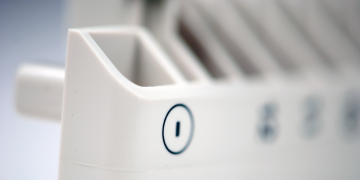
Brighter Precision Plus Protein™ Dual Color Standard — The Brightest Protein Marker Available
Take a quick look at Bio-Rad’s brighter Precision Plus Protein™ Dual Color Standard with this article comparing this standard to other available protein markers. Plus, find out why the ability to visualize a protein standard after reprobing matters to one researcher!

2-D Electrophoresis Tips & Tricks — Part I
In the first half of this two-part presentation, Dr. Anton Posch, an expert in 1- and 2-D electrophoresis, provides tips and tricks for the 2DE workflow, covering sample preparation, protein extraction and solubilization, reduction and alkylation of protein side chains, and IEF. The webinar highlights critical success factors and is aimed at both novices and experts wanting to sharpen their skills and keep up on new advances in the field.

2-D Electrophoresis Tips & Tricks — Part II
In the second part of this presentation, Dr. Posch details IEF separation, use of immobilized pH gradient (IPG) strips, running second-dimension PAGE, spot detection, gel matching, and data analysis. The Q&A elaborates on sample preparation, storage, and running conditions.

Revealing BRCA2 Pathways in Cancer with Bio-Rad’s V3 Western Workflow
Twenty years after the discovery of the link between BRCA gene mutations and breast cancer, researcher Ryan Jensen of the Yale Medical School is looking into the interactions between the DNA repair protein RAD51 and BRCA proteins using Bio-Rad’s V3 Western Workflow.

Using Bio-Rad’s PDQuest Software to Generate a Match Rate between 2-D Electrophoresis and Western Blotting
2-D electrophoresis followed by immunodetection of protein spots using western blotting is adopted commonly in proteomics studies. Here we present step-by-step instructions for obtaining accurate overlaps between the gel and the blot using the PDQuest 2-D gel analysis software.

Bio-Rad’s 2-D Electrophoresis Workflow How-To Guide, Fourth Edition, is Now Available for Download
Bio-Rad’s 2-D electrophoresis workflow offers better results in a shorter time. Take a detailed look at this workflow by downloading the updated edition of our How-To Guide.

PDQuest™ Software: Bite-Sized Video Tutorials Make Learning 2-D Analysis Easy
Learning to use analysis software can be time-consuming and following a manual can be challenging.

Using the new PROTEAN® i12™ IEF System to Achieve Highly Reproducible Data and Extended Separation Over Multiple pH Ranges in a Single Run
2-D electrophoresis is a multistep technique that separates proteins first by a protein’s isoelectric point and then by its molecular weight. This powerful technique can separate thousands of proteins in a complex proteome and is useful for applications such as protein profiling and biomarker discovery. The drawback of the technique is that it requires multiple steps, each of which can be time-consuming and can contribute to problems with reproducibility.

Use of the PROTEAN® i12™ IEF System for In-Gel Peptide Fractionation Prior to LC-MS and Comparison with Off-Gel Fractionation
This tech report compares in-gel and off-gel separation of proteins in terms of overall speed and simplicity of the workflow, resolution of the separation, and depth of proteome coverage provided. Results found that as well as higher peptide yields, in-gel separations were better suited to take full advantage of downstream analysis methods.

PROTEAN® i12™ IEF System: Independent Voltage and Current Control Enables Optimization of First-Dimension IEF Conditions
This tech report demonstrates the advantages of independently controlled voltage and current parameters for each focusing tray in optimizing IEF conditions for a complex, insoluble membrane protein fraction.
